17 March 2000 (morning, continued)
The trail from Deir el-Medina to the Valley of the Kings brings us out near KV35, the tomb of Amenhotep II. Bill would like us to see this one together and then we’ll explore on our own for a couple of hours before meeting up again to tour KV62, Tutankhamen’s tomb.
KV35 is important for a number of reasons, not the least because, like DB320, it housed a royal mummy cache. Discovered in 1898 by French Egyptologist Victor Loret, it had been heavily looted in antiquity, but was still knee-deep in broken funerary furnishings: a higgledy-piggledy puzzle of strange items whose complete form and function could only be guessed at until discovery of similar, unbroken items in Tutankhamen’s tomb over two decades later.
We enter and walk down a very long and steep series of stairs and corridors. The tomb is an odd mix of finished and unfinished surfaces, with this first part being unfinished. When we finally arrive in the burial chamber, however, we’re rewarded with a magnificent “stick figure” illustration of the Amduat that explains, in 12-hour segments, what the deceased will encounter in the netherworld.
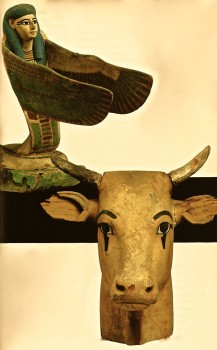
Winged cobra and cedarwood cow god from KV35. From “The Illustrated Guide to the Egyptian Museum in Cairo,” American University in Cairo Press.
Loret was a careful excavator. He superimposed a series of grids over the chambers as he cleared them and tied his finds to those grids in his notes. He also made sketches and took photographs. Unfortunately, he never published more than a general article about the tomb and no one else took up the task. Still, a few items are always mentioned in the accounts I’ve read: a winged wooden snake sculpture, a painted cedar cow head, and a large model boat that sported a rather gruesome mummy tossed carelessly on top.
And then there was Amenhotep himself. He was in his lidless sarcophagus, encased in an off-the-rack cartonnage mummy case and wrapped in linen supplied for him by the 21st dynasty priests who were in charge of tidying up the Valley of the Kings after extensive looting. These same priests rescued nine of his compatriots and stashed them in a side chamber. With this bonanza, many of the pharaohs not included in the Deir el-Bahari cache (DB320) were now accounted for, leaving the world with an astonishingly complete set of New Kingdom kings.
The mummies didn’t stop there, however, with three more — two women and a boy — on the floor of a side chamber, unwrapped and without any helpful jottings. They’ve inspired speculation ever since, especially the “Elder Lady,” a haughty beauty with flowing hair who is, most likely, Queen Tiye, wife of Amenhotep III.
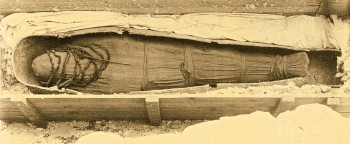
Amenhotep, packed for shipment to Cairo before being ordered back to his tomb. Note the ancient wreath of flowers around his head.
Loret lovingly packed all the mummies for shipment to Cairo, but at the last-minute the Egyptian government ordered them returned to the tomb. In 1900 that decision was partly reversed, but the three unwrapped mummies stayed in the side chamber and Amenhotep was popped back into his sarcophagus and put on public display.
Then, as if the man hadn’t suffered enough, modern robbers broke into the tomb in late 1901 and ripped the bandages from around Amenhotep’s head and chest, presumably looking for jewelry and amulets and not realizing the wrappings were an ancient re-do and valuables were long gone. Luckily, the mummy was relatively undamaged and so he went back on display until 1931, when he finally made the trip to Cairo and joined the rest of the gang. The three side chamber mummies, however, stayed put.
As we gaze at the stone sarcophagus — it’s quite beautiful, made of red quartzite and with a rounded end like a cartouche — it’s hard to absorb that this space was once so mysterious and complex. Wooden planking covers the floor and the place is packed with people and shockingly hot and humid. These conditions cannot be good for the tomb and I’m seized with guilt for contributing my own sweat and respirations to the mix.
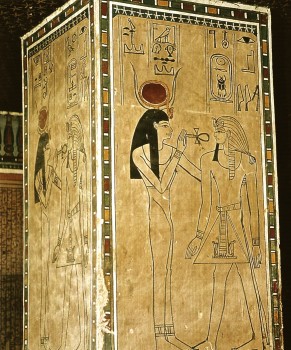
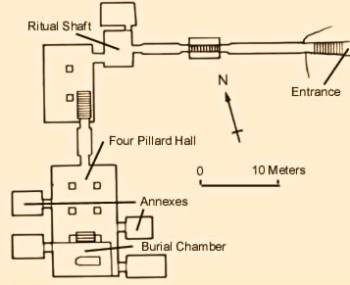

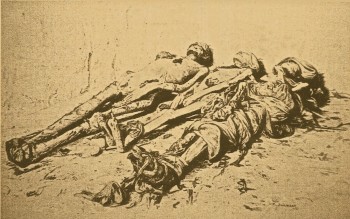

I love how you describe your journey and the feelings that it has evoked. When I was in grade school I did a major project about King Tut! I still have it somewhere and the books i used for research!
Loved the “off the rack” mummy case. And I wonder why Queen Tiye still had her hair?
Queen Tiye’s hair is a fascinating subject! Those long wavy tresses are auburn, but I have yet to hear anyone say with certainty if that was her natural color or if she may have resorted to a little henna. Her hair is also the best clue to her identity. A coffinette in King Tutankhamen’s tomb was inscribed for Queen Tiye and contained a lock of hair, presumably as a memento. That hair underwent testing in 1976 and 2010, and both times was found to be a match for the hair of the “Elder Lady.” Tut’s family tree is pretty wonky, and a lot of things are still uncertain, but best guess is that Queen Tiye was his grandmother.
As to why she still has her hair, although the Egyptians loved wigs going back as far as the Old Kingdom, they usually kept their hair unless they had a good reason to get rid of it, like religious purposes. For example, there’s a marvelous painted Old Kingdom statue of a woman named Nofret that shows her wearing a braided wig, but she clearly has her natural hair showing underneath at the top of her forehead. Follow this link to take a peek: http://en.wikipedia.org/wiki/Nofret (Click on her picture for a better view.)
Another amazing adventure with rich detail. Thank you for taking me along.